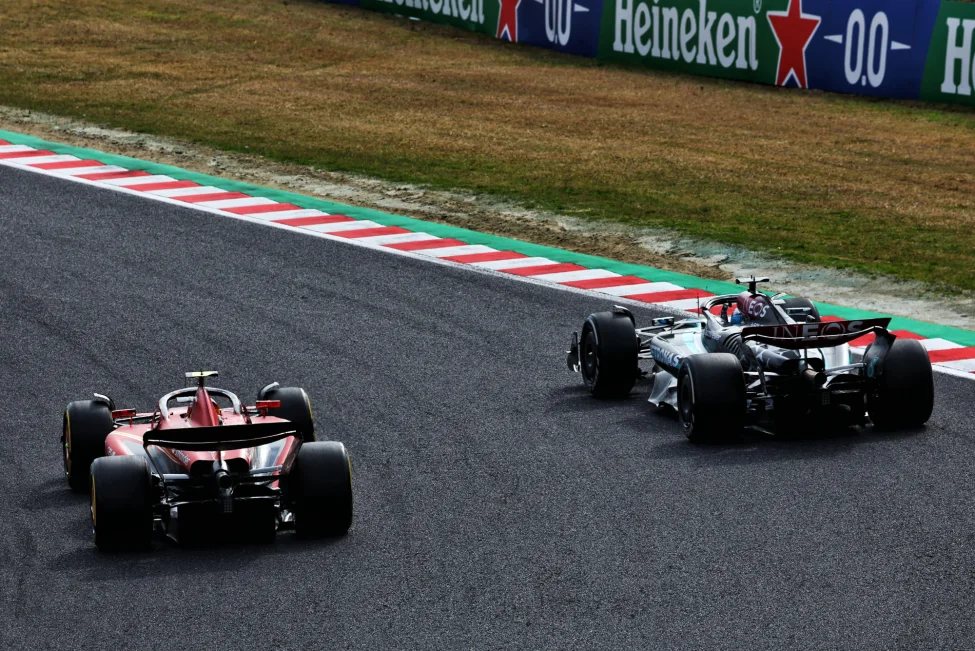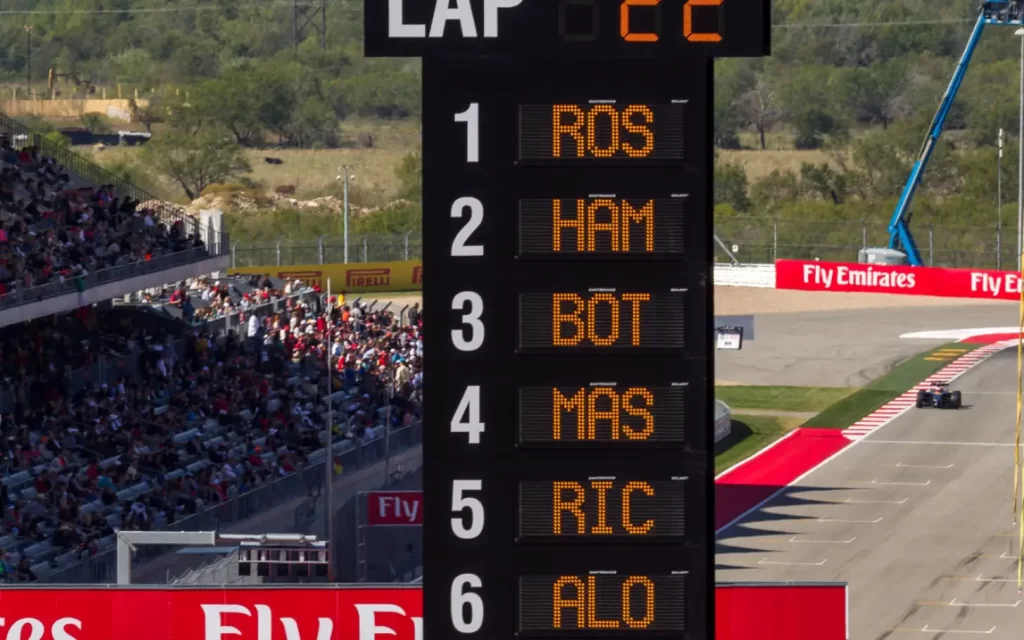The interval in F1 is an important measurement within Formula One to show the differences in lap times or distances between cars. In this article, we’ll explain the meaning of the interval in F1 in a simplified guide.

Understanding Interval in F1
In Formula 1, an interval typically refers to the time difference between two cars on the track. It indicates how far ahead or behind one car is compared to another. These intervals are measured in terms of time, usually in seconds or milliseconds, and they play a crucial role in understanding the relative positions of cars during a race. Teams and drivers use interval data to:
- Assess their performance
- Plan their race strategy
- Make tactical decisions during the race
How is Interval in F1 Measured?
The interval is measured using transponders within the Formula 1 cars. This electronic device measures the gap between cars and emits a signal to receivers, which can determine the interval.
Diagram Placeholder: Interval Measurement Using Transponders
The Meaning of F1 Intervals: Differences per Circumstances
Intervals can be used in different circumstances. For example, for the DRS (Drag Reduction System), a driver has to be within one second of the driver in front of him at a DRS-detection zone. If this is the case, the driver is able to open up the DRS on the straight. To determine this one-second rule, the interval is used as a measurement.
Additionally, the interval can be used for training sessions and qualifying sessions. Here you can find the differences in lap time between the drivers and not the real-time interval differences. This is only used in races to track the gaps between the drivers during the race.
Interval in F1 Meaning: The Difference Between Interval and Gap to Leader

On the timetable, both the terms ‘gap to leader’ and ‘interval’ are used. But what’s the difference between those?
- Gap to Leader: This term specifically refers to the time difference between a car and the leading car in the race. It indicates how far behind or ahead a particular car is compared to the car currently leading the race.
- Interval: An interval, on the other hand, refers to the time difference between any two cars on the track, not just the leader. It can indicate the time gap between any two specific cars, whether they are battling for position, lapping each other, or simply circulating on the track.
In summary, while the “gap to leader” focuses on the time difference between a car and the leading car, the “interval” refers to the time difference between any two cars, providing a broader perspective on the relative positions of cars during a race.
What Does Interval Mean in an F1 Race?
In Formula 1 racing, an interval refers to the time gap or distance between two cars on the track. It indicates how far ahead or behind one car is compared to another.
How is Interval Measured in F1?
In Formula 1, intervals between cars are typically measured using transponders. Each Formula 1 car is equipped with a transponder, which is a small electronic device that emits a unique signal. This signal is picked up by receivers located around the circuit at various timing points. This measurement helps teams and viewers understand the gap between cars during races, qualifying sessions, and practice sessions.
What is the Interval for the Leader in F1?
The leader in F1 doesn’t have an interval for the car in front of him, which he might have already lapped. However, there is an interval where the leader and the second place are compared.
Statistics
Here are some statistics related to the intervals in F1:
| Race Event | Average Interval (sec) | Minimum Interval (sec) | Maximum Interval (sec) |
|---|---|---|---|
| Australian GP | 1.2 | 0.8 | 1.5 |
| Monaco GP | 0.9 | 0.6 | 1.3 |
| British GP | 1.4 | 0.9 | 1.8 |
Key Points
- Interval: Time difference between two cars on the track.
- Gap to Leader: Time difference between a car and the leading car.
- Measurement: Done using transponders in the cars.
- Usage: Important for race strategy and performance assessment.
Additional Resources
Quote
“Intervals are crucial in F1 as they help teams make informed decisions during the race, allowing them to strategize effectively and maintain competitive advantage.” – F1 Analyst
Diagram Placeholder: Interval Usage in F1

2 Comments